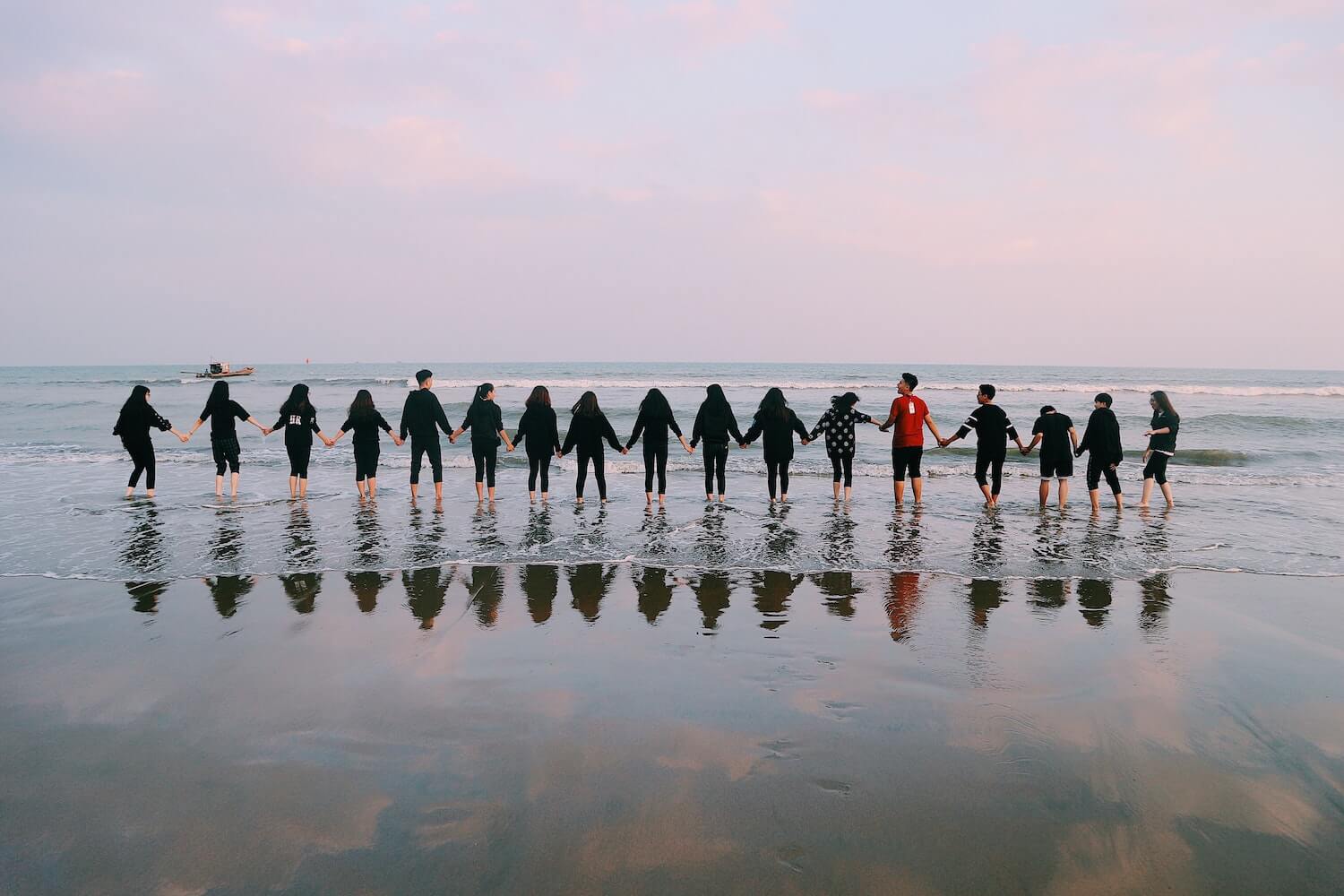I’m Stephanie Cwynar, and today I want to share my story of building a global enablement team when we barely had the basics in place. It was thrilling, exhausting, and pushed me far outside my comfort zone.
If you’re an enablement leader looking to take your skills to the next level, I hope my lessons learned will give you fresh inspiration.
I’ll take you through how I built an empowered team, gained skeptical stakeholder buy-in, drove alignment across regions, and ultimately achieved the results that made it all worthwhile.
This is the real story – no sugarcoating! I’ll share the tactical steps as well as the leadership principles that guided me. My promise is to be vulnerable so you can learn from my wins (and stumbles) over three years of rapid growth.
So grab your favorite pen and brace yourself for my tale of creating a sales enablement program where there was literally none before. If I can do it, you can do it too. Let’s get started...
- My background
- The challenge: Building a global team from scratch
- My approach: It's all about people
- The proof: Measuring results
- Final thoughts
My background
I spent the first decade or so working in sales and marketing roles - everything from selling lipstick to developing hair color trends for L'Oreal.
But I realized my true passion was for education. I went back to grad school, earned my masters in higher ed, and started working for the New York City Department of Education.
Talk about a switch from corporate sales!
My focus was helping scale career and technical education programs that created pathways from high school to community college. I partnered with companies like IBM and Microsoft to develop curriculum to prepare students for careers in tech. It was rewarding work but I eventually burned out.
On a whim, I Googled "How to combine marketing, sales and education" and stumbled upon the world of sales enablement.
A new door opened.
I landed a role at Facebook focused on product training and was able to combine my knowledge across sales, marketing and learning.
After a few years, an exciting opportunity fell in my lap...
The challenge: Building a global team from scratch
In 2019, I was asked to build a brand new enablement team to support Facebook's rapidly scaling customer service organization. We operated call centers around the world and were adding thousands of agents a year.
It was an awesome challenge but also daunting. I'd be managing a distributed team across multiple regions, time zones and companies. And I'd be tasked with enabling a global operation when we didn't even have the basics in place.

I had to wrap my head around the opportunity and current challenges:
- 13 call centers globally but no centralized view of what training existed
- 6 core customer service programs but continuity across them
- 50 vendor trainers but minimal coordination
- 1500 agents to enable with plans to scale dramatically
It was essentially starting from scratch. My mind raced with questions:
- How do I build a high-performing team across different cultures and time zones?
- How do I get stakeholder buy-in when enablement is brand new to them?
- How do I drive consistency globally while still localizing content?
- What infrastructure and systems do we need to be successful?
- How do I even begin to prioritize where to start?
I was energized by the challenge but knew I couldn't go at it alone.
My approach: It's all about people
I realized that while I was building a program, it was really about enabling people.
My first two hires were critical. I found strong partners who brought complementary skills to mine. Together, we spent time researching before taking action, doing everything from observing agents to pilot testing training delivery.
Armed with insights, I was ready to build my team using a framework we called the 4 Directions of Teaming:

Team within - creating our culture
I started with just two team members and slowly grew to 16 over three years. With each new hire, I looked for opportunities to demonstrate our value so we could continue making the case to expand.
Once we hit about eight team members, I knew it was time to add a management layer for global coverage. I hired leaders in Europe and APAC so we always had someone online as we operated 24/7.
Some of the cultural norms I instilled were:
⏰ Flexible schedules
- Encouraged early/late meetings to accommodate time zones
🖥️ Asynchronous communication
- Relied on tools like Slack for pre-reads before meetings
🌎 Cultural sharing
- Had team members provide tips on norms in their regions
🤝 Social connections
- Used fun channels for water cooler chat on life outside work
This foundation of trust, empathy and communication enabled us to collaborate effectively across regions.
Team across - Gaining stakeholder buy-in
I had 10 internal departments and 23 external call centers to partner with. It was chaotic with no centralized processes.
In every single meeting for the first year, I brought a simple slide: “Partnering Together in 2020.” It outlined:
- Submitting intake forms for new requests so we could prioritize holistically
- Joining their weekly business reviews so I could advise strategically
- Providing learning design expertise while they shared subject matter expertise
This slide set clear expectations on working with us. It was a bit of tough love at first! But it enabled us to have honest conversations about needs on both sides.
Over time, I focused on sharing the value we uniquely provided:
- Explaining how we set global standards while vendors handled local delivery
- Introducing evaluation models like Kirkpatrick so they understood it takes time to demonstrate business impact
Being proactive in educating stakeholders was the key to building trust and credibility long-term.

Team through - Defining ways of working
One of our first steps was hiring very senior professionals who could operate independently in their local regions. I looked for 8-10 years experience minimum.
While they owned local relationships, we created consistency through:
- Localization: Ensuring 80% of content was reusable globally while 20% was customized to the region.
- Personalization: Leveraging learner profiles and testing data to create personalized learning paths.
- Governance: Using RACI matrices to clarify who was responsible for what across the team.
This balance of structure and flexibility enabled us to scale effectively.

Team forward - Owning the vision
I involved stakeholders from the start in co-creating a three year roadmap:
- Year 1: Stabilize - Centralize content ownership from vendors to Facebook
- Year 2: Modernize - Improve content quality and relevance
- Year 3: Energize - Incorporate active learning and role plays
But I always kept our team growth front and center as a priority. My team couldn't enable others without first enabling themselves!
Being armed with the roadmap and priorities enabled me to guide stakeholders on how enablement could drive their goals and where I needed their support.
The proof: Measuring results
Our holistic approach resulted in:
✅ A world-class team - grew from 2 to 16 team members capable of advising globally and executing locally
✅ 20,000 agents onboarded - created learning paths for all 13 customer service programs
✅ Improved metrics - increased resume rate by 0.36% within 2 months of starting, enabling support for thousands more customers.

Final thoughts
Phew, we covered a lot of ground together! If you made it this far, high five my friend. 🙌
Let me leave you with my key lessons learned:
Focus on people. At the end of the day, enablement is about empowering people - your team, your stakeholders, and especially your learners. If you invest in their growth and create a human-centered program, the results will come.
Earn trust along the way. This won't happen overnight. Be patient, prove your value, and educate stakeholders on realistic outcomes. Transparency is key.
Localize thoughtfully. Don't rely on a one-size-fits-all approach. Adapt to each culture and region, but maintain alignment on the end goals.
Prioritize ruthlessly. You can't do it all at once. Make trade-offs, set boundaries, and don't be afraid to say no. Less is more.
And above all, believe in yourself. You were chosen for this role for a reason. Even in uncertainty, have confidence in the vision you want to create.
You now have in your hands the blueprint to build an enablement program from the ground up. Take it and make it your own - I can't wait to see what you build!




